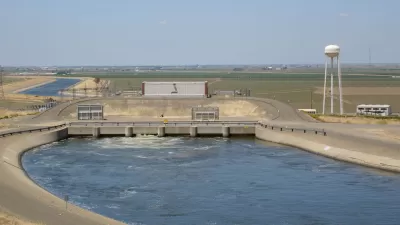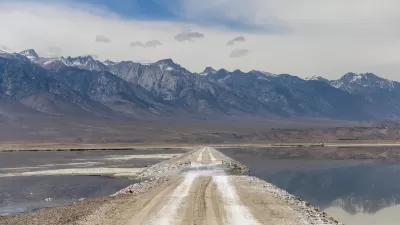The controversial construction of the Los Angeles Aqueduct provided grist for famous books and movies, and conflicts that continue to this day. In a multimedia feature, Louis Sahagun explores the history of the project that helped birth modern L.A.
One hundred years ago this Saturday, water poured forth from the mouth of the Los Angeles Aqueduct into the L.A. basin for the first time after a 200-mile trip from the Owens Valley. "The job — completed on time and under budget — required 215 miles of road, 280 miles of pipeline, 142 tunnels, more than 1 million barrels of cement and 6 million pounds of dynamite," writes Sahagun.
"The Los Angeles Aqueduct — powered by gravity alone as it tapped the snows of the Sierra Nevada more than 200 miles to the north — ensured reliable irrigation for farms and ranches and nurtured a galaxy of prosperous Southern California suburbs and industrial centers," he adds. "Like a magnet, it pulled in millions of people from around the country, offering them new jobs, communities and lifestyles."
“It will continue to serve the city for another 100 years,” said DWP water systems manager Marty Adams, “and, with maintenance, a lot longer than that.”
FULL STORY: ‘THERE IT IS — TAKE IT’ A century of marvel and controversy

Planetizen Federal Action Tracker
A weekly monitor of how Trump’s orders and actions are impacting planners and planning in America.

Map: Where Senate Republicans Want to Sell Your Public Lands
For public land advocates, the Senate Republicans’ proposal to sell millions of acres of public land in the West is “the biggest fight of their careers.”

Restaurant Patios Were a Pandemic Win — Why Were They so Hard to Keep?
Social distancing requirements and changes in travel patterns prompted cities to pilot new uses for street and sidewalk space. Then it got complicated.

Platform Pilsner: Vancouver Transit Agency Releases... a Beer?
TransLink will receive a portion of every sale of the four-pack.

Toronto Weighs Cheaper Transit, Parking Hikes for Major Events
Special event rates would take effect during large festivals, sports games and concerts to ‘discourage driving, manage congestion and free up space for transit.”

Berlin to Consider Car-Free Zone Larger Than Manhattan
The area bound by the 22-mile Ringbahn would still allow 12 uses of a private automobile per year per person, and several other exemptions.
Urban Design for Planners 1: Software Tools
This six-course series explores essential urban design concepts using open source software and equips planners with the tools they need to participate fully in the urban design process.
Planning for Universal Design
Learn the tools for implementing Universal Design in planning regulations.
Heyer Gruel & Associates PA
JM Goldson LLC
Custer County Colorado
City of Camden Redevelopment Agency
City of Astoria
Transportation Research & Education Center (TREC) at Portland State University
Camden Redevelopment Agency
City of Claremont
Municipality of Princeton (NJ)




























